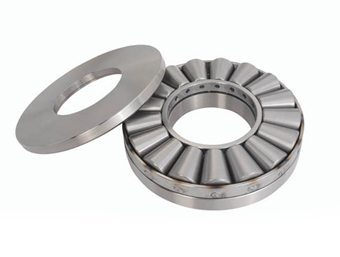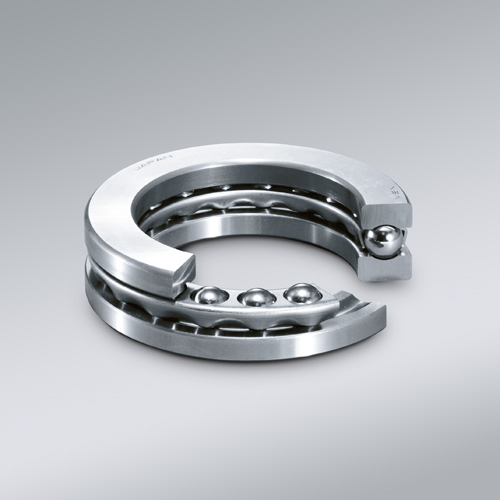Thrust Bearings in Applications with Combined Axial and Radial Loads
Thrust bearings play a crucial role in applications where both axial and radial loads are present, providing several benefits:
- Axial Load Handling: Thrust bearings are specifically designed to handle axial loads, ensuring that forces acting parallel to the bearing’s axis are efficiently managed.
- Reduced Friction: By minimizing friction between moving components, thrust bearings enable smoother motion, even when dealing with combined loads.
- Load Distribution: In situations where both axial and radial loads are present, thrust bearings assist in distributing these loads appropriately, preventing excessive stress on individual components.
- Compact Design: Thrust bearings’ ability to handle axial loads allows for more compact machinery designs, optimizing space utilization in various applications.
- Improved Performance: By efficiently managing combined loads, thrust bearings contribute to the overall performance, longevity, and reliability of machinery.
Applications with combined axial and radial loads include gearboxes, automotive transmissions, industrial machinery, and certain types of rotating equipment. In these scenarios, thrust bearings ensure that machines operate smoothly, efficiently, and with minimal wear even under complex load conditions.
Effective Management of Axial Loads with Thrust Bearings
Thrust bearings play a crucial role in managing axial loads in various scenarios where precision and efficiency are essential. Some examples include:
- Automotive Transmissions: Thrust bearings are used in automotive transmissions to handle the axial loads generated by the gears and shifting mechanisms, ensuring smooth gear changes and efficient power transmission.
- Aerospace Control Surfaces: In aircraft, thrust bearings are used in control surfaces such as ailerons, elevators, and rudders to manage axial loads during flight control maneuvers.
- Industrial Pump Systems: Thrust bearings are employed in centrifugal and axial-flow pumps to support the axial loads generated by the impeller rotation, ensuring reliable pumping performance.
- Construction Equipment: Heavy construction machinery like cranes and excavators use thrust bearings to handle the axial loads arising from lifting and movement of heavy loads.
- Marine Propulsion Systems: In ship propulsion systems, thrust bearings support the axial loads generated by the propeller’s rotation, allowing for efficient and smooth propulsion.
- Wind Turbine Gearboxes: Thrust bearings are used in wind turbine gearboxes to manage the axial loads generated by wind forces on the blades, enabling efficient power generation.
- Machine Tools: Precision machine tools like lathes and milling machines use thrust bearings to control axial loads during machining operations, ensuring accuracy and surface finish.
- Rail Systems: Thrust bearings are used in rail systems to support the axial loads generated by the weight of the trains and ensure smooth movement along the tracks.
- Medical Imaging Devices: MRI and CT scanning devices utilize thrust bearings to handle axial loads during the movement of scanning components, ensuring accurate and precise imaging.
- Energy Generation: Thrust bearings in gas turbines and hydroelectric generators manage axial loads resulting from rotational forces, contributing to efficient power generation.
Thrust bearings are vital in these scenarios and many more, where precise axial load management is essential for reliable and efficient operation.
Advantages of Thrust Bearings Compared to Other Bearings
Thrust bearings offer several distinct advantages when compared to other types of bearings, particularly in applications involving axial loads:
- Axial Load Handling: Thrust bearings are specifically designed to handle axial loads, making them well-suited for applications where forces are directed along the bearing’s axis.
- Compact Design: Thrust bearings have a relatively small profile, allowing for compact and space-efficient designs in mechanical systems.
- Rotation and Linear Movement: Thrust bearings enable simultaneous rotation and linear movement, making them suitable for applications where both types of motion are required.
- Load Distribution: These bearings distribute axial loads evenly across their surfaces, reducing localized stress points and ensuring more uniform load distribution.
- Low Friction: Thrust bearings are designed to minimize friction between moving parts, resulting in smoother operation and reduced wear.
- High Load Capacity: Depending on the design, thrust bearings can handle substantial axial loads, allowing them to support heavy equipment and machinery.
- Precision: In precision applications, thrust bearings provide accurate axial load management, ensuring precise positioning and movement.
- Specialized Designs: Thrust bearings come in various designs, such as ball thrust bearings, roller thrust bearings, and tapered roller thrust bearings, each tailored to specific load capacities and application requirements.
Overall, thrust bearings excel in applications where axial load management is crucial, providing reliable support, smooth motion, and efficient operation.
editor by CX 2024-05-15



